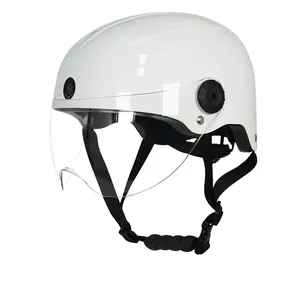Electric bikes, also known as e-bikes, combine traditional bicycle design with electric motor technology to provide assistance to the rider. The technology behind electric bikes involves several key components working together to create a seamless and efficient riding experience. Here’s an overview of the main technological elements of electric bicycles:
- Electric Motor: The electric motor is the heart of an e-bike. It provides the necessary power to assist the rider’s pedaling or even propel the bike without pedaling (in the case of throttle-controlled e-bikes). Motors can be located in various parts of the bike, such as the hub of the front or rear wheel, or integrated into the bike’s frame near the crankset.
- Battery: The battery stores the electrical energy needed to power the motor. E-bike batteries are typically lithium-ion or lithium-polymer and are rechargeable. They come in different capacities, which affect the range the e-bike can cover on a single charge. Battery placement varies; it can be mounted on the frame, integrated into the downtube, or attached to a rear rack.
- Controller: The controller manages the flow of power from the battery to the motor. It also allows the rider to select different levels of assistance or control the motor’s power output. Some controllers are integrated into the bike’s display, while others might be separate units mounted on the handlebars.
- Pedal-Assist Sensors: Pedal-assist e-bikes use sensors to detect the rider’s pedaling motion and intensity. These sensors communicate with the controller to determine when and how much assistance the motor should provide. Common types of pedal-assist sensors include cadence sensors (detecting pedal rotations) and torque sensors (measuring how hard the rider is pedaling).
- Throttle (Optional): Throttle-controlled e-bikes have a throttle mechanism that allows the rider to control the motor’s power output directly. This is similar to a motorcycle throttle, enabling the bike to move without pedaling.
- Display and User Interface: The display shows information such as speed, battery level, distance traveled, and selected assistance level. Some advanced displays also have navigation features and connectivity options. Riders can interact with the display to adjust settings, change assistance modes, and access other features.
- Regenerative Braking (Optional): Some e-bikes are equipped with regenerative braking technology, which can recover a small amount of energy during braking by converting the bike’s kinetic energy back into electricity and storing it in the battery.
- Frame and Design: E-bikes are designed to accommodate the additional components while maintaining the aesthetics and functionality of a traditional bicycle. Frames are often reinforced to handle the extra weight of the motor and battery.
- Wiring and Connectors: The various components of an e-bike are connected through a system of wiring and connectors. Proper wiring management is essential for safety and functionality.
- Charging System: E-bike batteries can be charged using a standard electrical outlet. Charging times vary based on the battery capacity and charger specifications.
These technological elements work in harmony to provide the rider with assistance, control, and convenience. The combination of electric and mechanical power allows e-bike riders to enjoy enhanced riding experiences while maintaining the fundamental aspects of cycling.





























